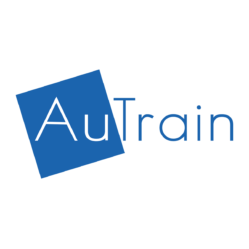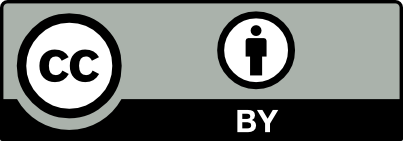11:30– 12:00
Wrap up
Activity: Real-world application 1.1
References & Resources
Questions?
Goodbye & thanks
#9. Wrap up the session by summarizing the main points of it and monitoring participants learning
Note: Present slides number 27 and 28
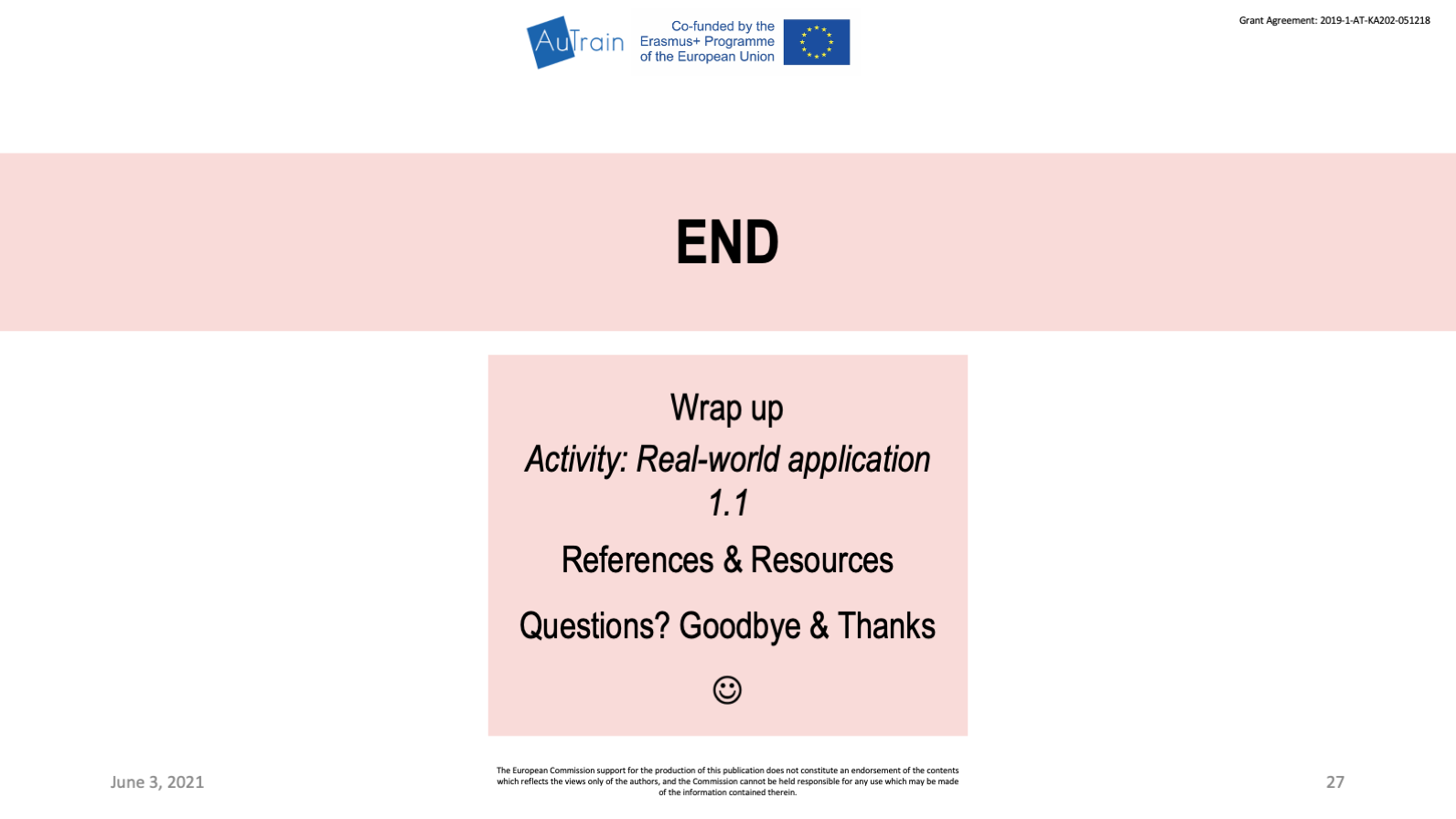
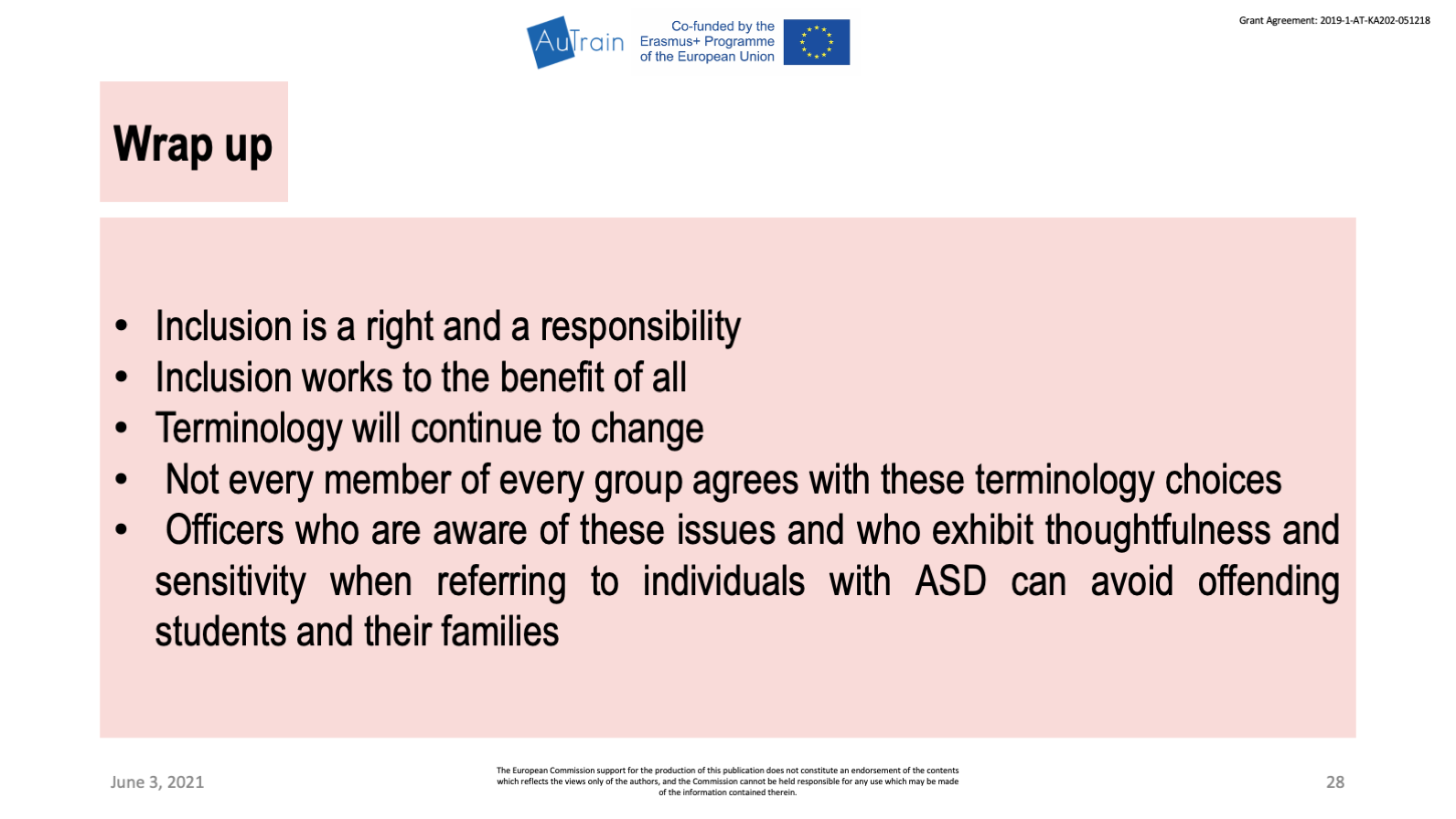
a. Brainstorm participant’s ideas while reading out load the text on slide 28. Use the brainstorm and the text on the slide to provide feedback, to ask for questions, to promote connections between concepts and interactions between participants, to clarify alternative views and perceptions, to tie up loose ends, to correct misunderstandings, to improve metacognition, and to make sure their knowledge is solidified.
b. Read out load the following text (present slide number 28):
- Inclusion is a right and a responsibility;
- Inclusion works to the benefit of all;
- Terminology will continue to change;
- Not every member of every group agrees with these terminology choices;
- Officers who are aware of these issues and who exhibit thoughtfulness and sensitivity when referring to individuals with ASD can avoid offending students and their families.
#10. Activity: Real-world application 1.1
Note: Present slide number 29
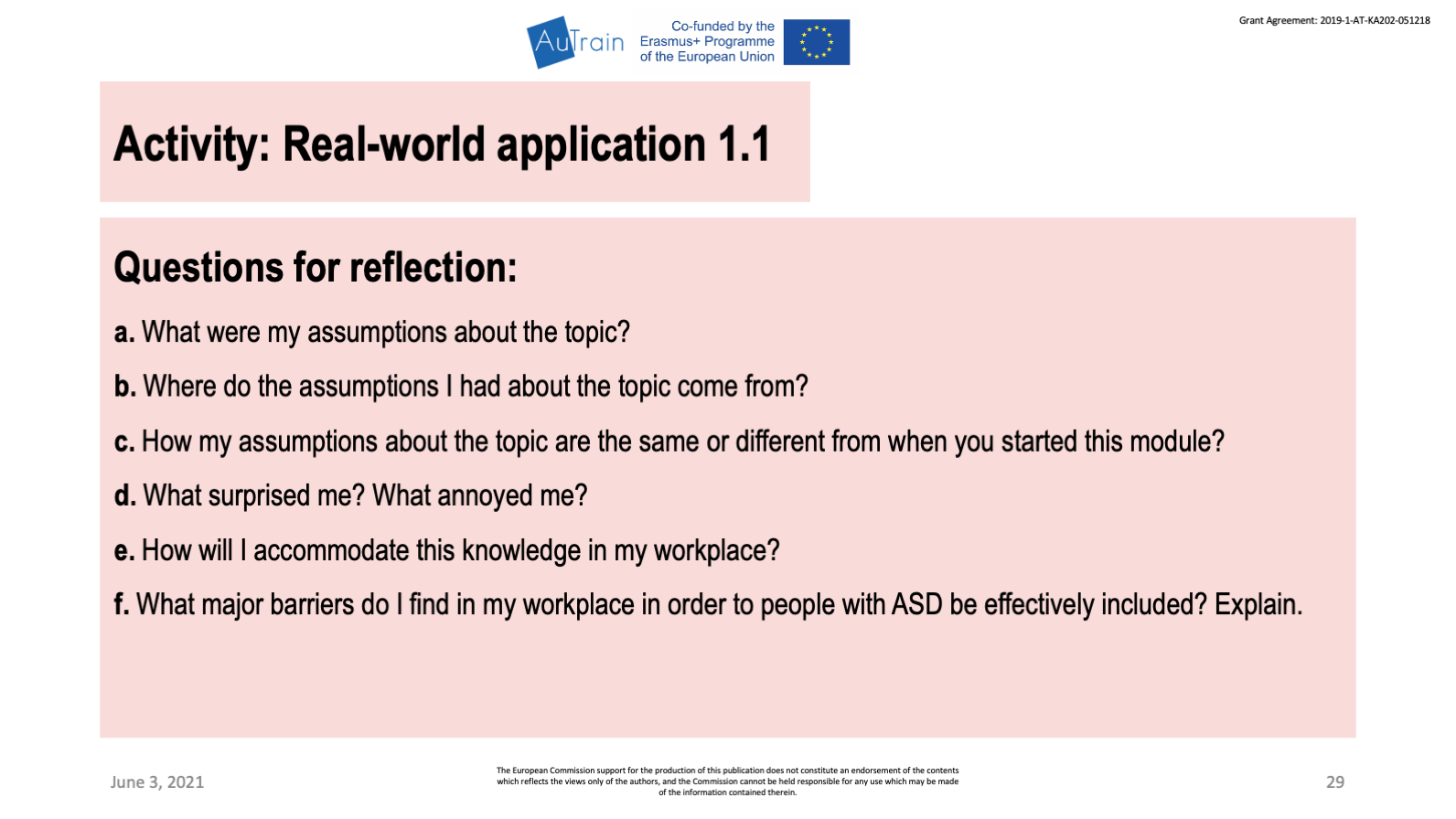
Introduce the aim of the activity
At home participants will write a reflective essay, to show what they are learning about the topic of the module as well as showing how you they develop critical and reflective skills. These reflections should be turned in and will be discussed later on.
Introduce the material: Pass out the Worksheet “Real-World Application 1.1”
Read out load the questions for reflection
a. What were my assumptions about the topic?
b. Where do the assumptions I had about the topic come from?
c. How my assumptions about the topic are the same or different from when you started this module?
d. What surprised me? What annoyed me?
e. How will I accommodate this knowledge in my work place?
f. What major barriers do I find in my work place in order to people with ASD be effectively included? Explain.
Ask for questions about the reflection.
#11. Introduce References & Resources, and indicate where participants can find it in the Autrain platform
Note: Present slide number 30 to 33
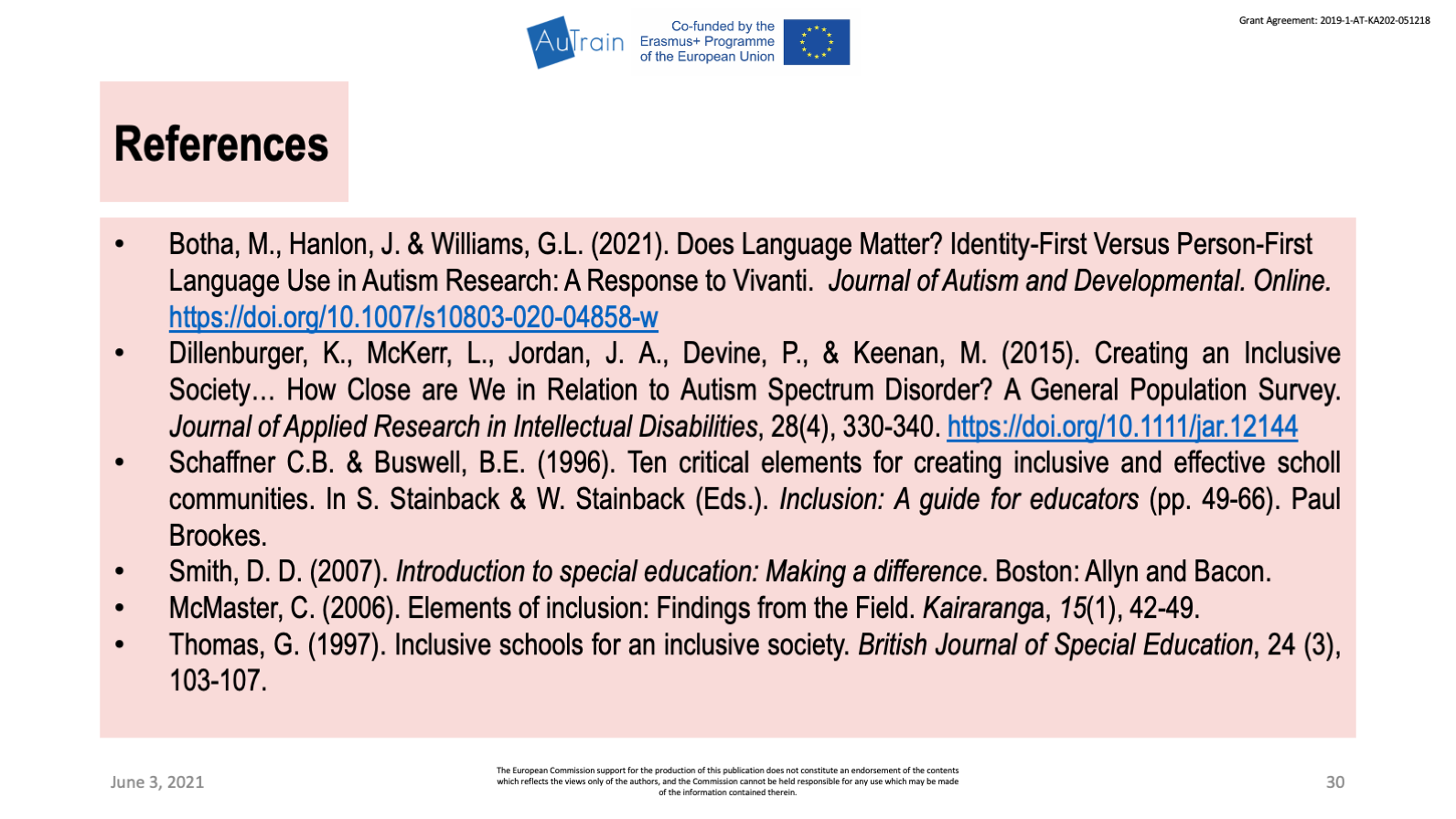
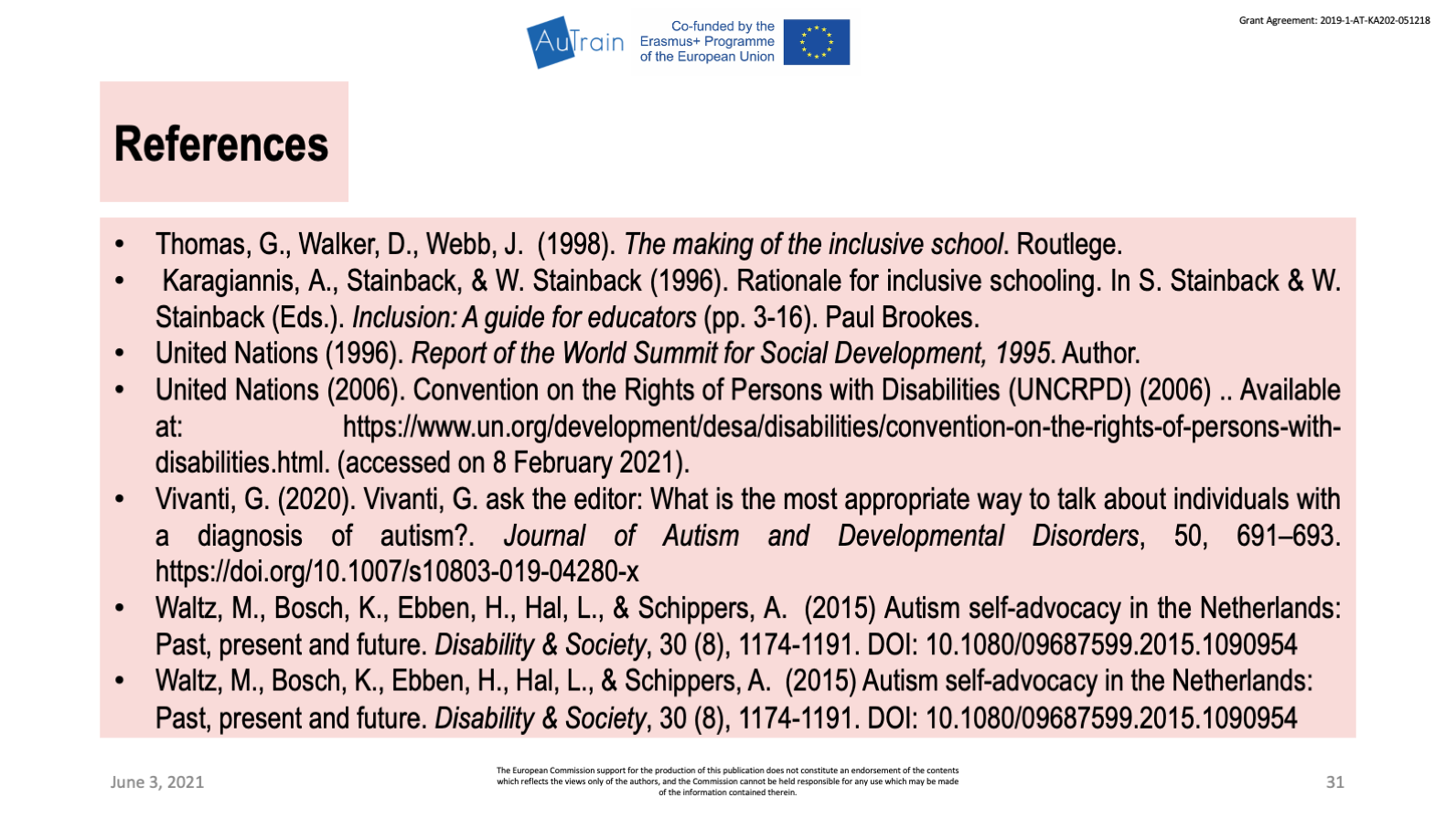
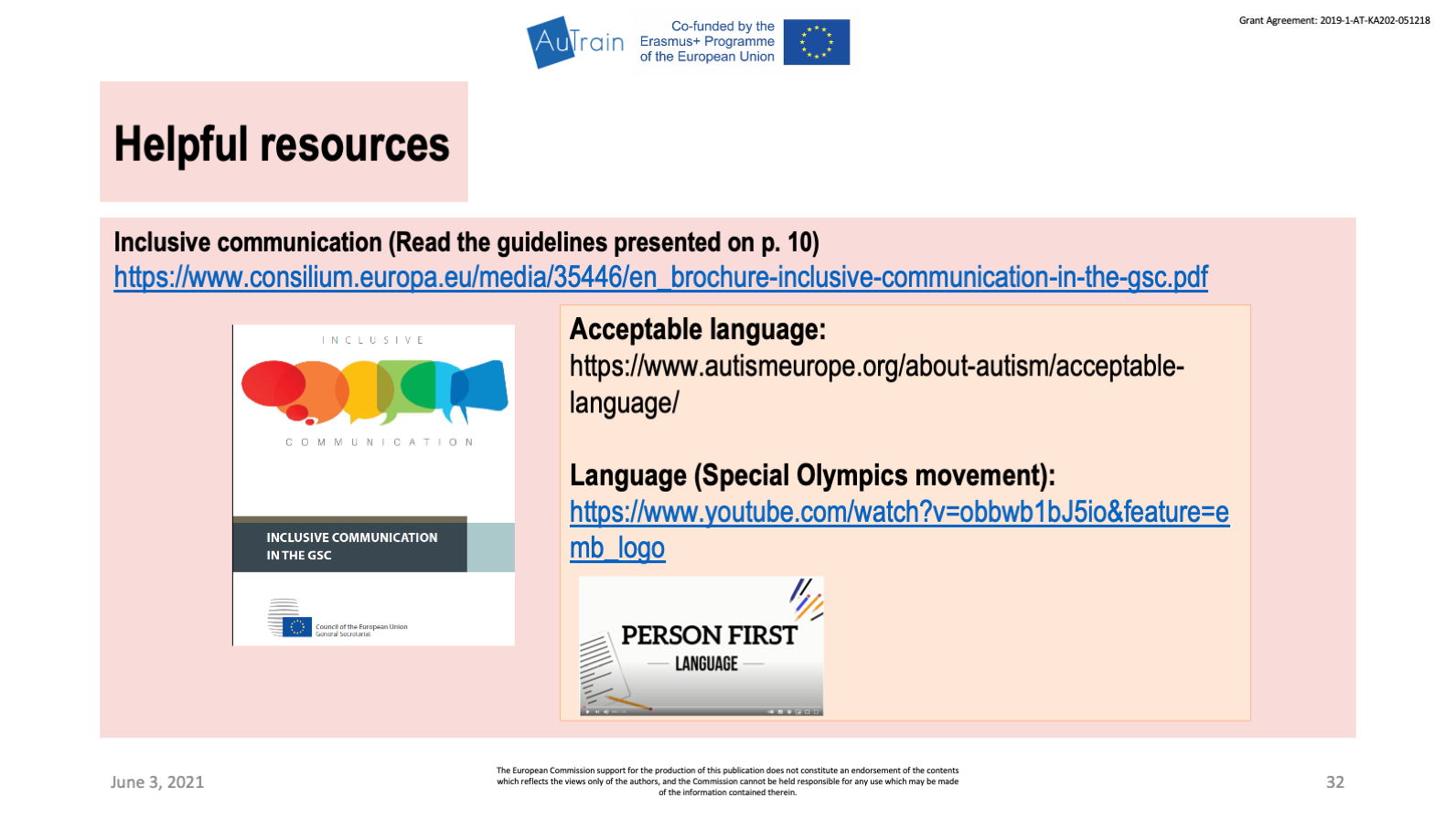
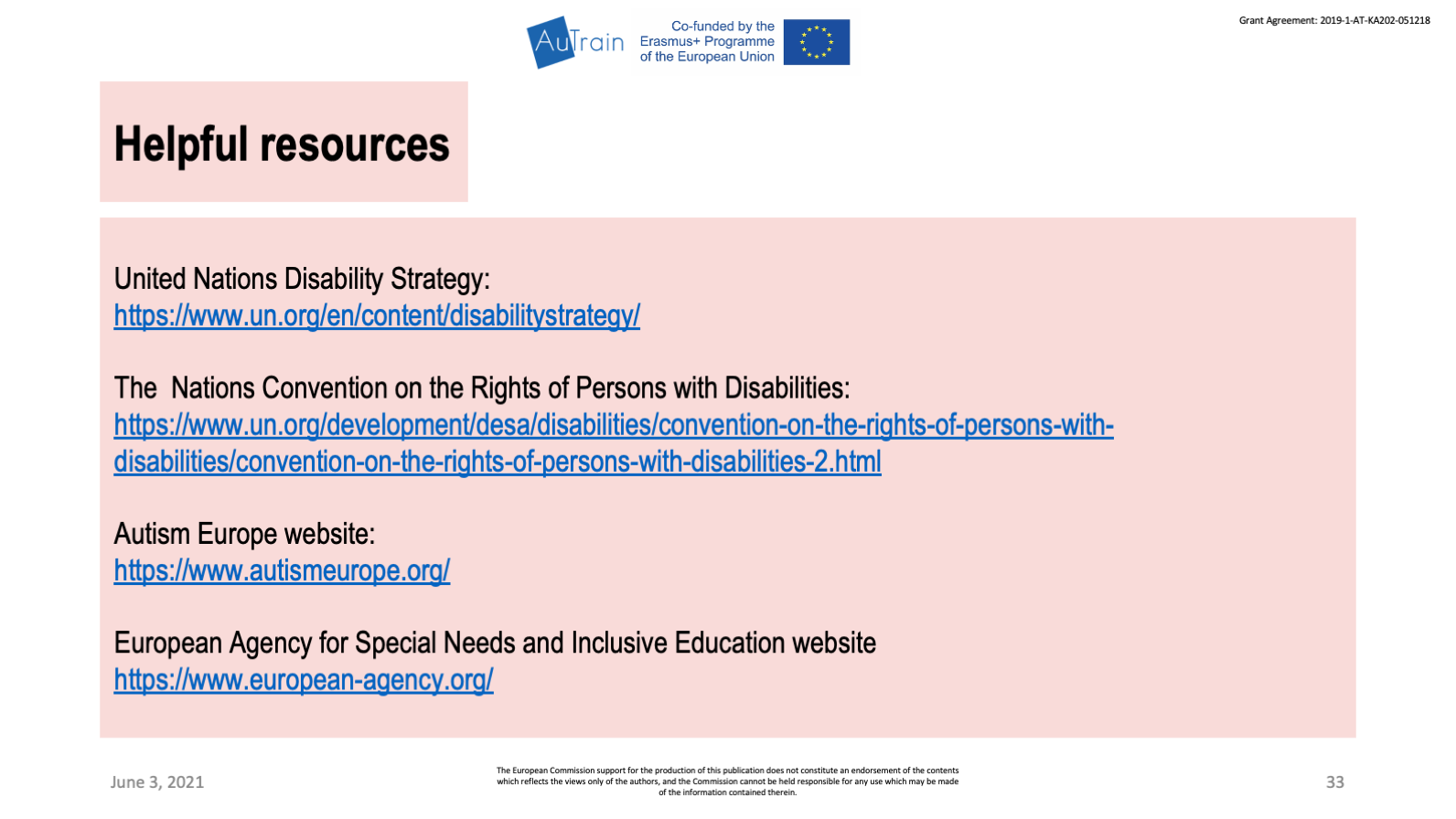
References
- Dillenburger, K., McKerr, L., Jordan, J. A., Devine, P., & Keenan, M. (2015). Creating an inclusive society… How close are we in relation to autism spectrum disorder? A general population survey. Journal of Applied Research in Intellectual Disabilities, 28(4), 330-340. https://doi.org/10.1111/jar.12144
- Schaffner C.B., & Buswell, B.E. (1996). Ten critical elements for creating inclusive and effective school communities. In S. Stainback & W. Stainback (Eds.). Inclusion: A guide for educators (pp. 49-66). Paul Brookes. McMaster, C. (2006). Elements of inclusion: Findings from the field. Kairaranga, 15(1), 42-49.
- Thomas, G. (1997). Inclusive schools for an inclusive society. British Journal of Special Education, 24 (3), 103-107.
- Thomas, G., Walker, D., & Webb, J. (1998). The making of the inclusive school. Routledge.
- Karagiannis, A., Stainback., & W. Stainback (1996). Rationale for inclusive schooling. In S. Stainback & W. Stainback (Eds.). Inclusion: A guide for educators (pp. 3-16). Paul Brookes.
- United Nations (2006). Convention on the Rights of Persons with Disabilities (UNCRPD) (2006). Available at: https://www.un.org/development/desa/disabilities/convention-on-the-rights-of-persons-with-disabilities.html. (accessed on 8 February 2021)
- Waltz, M., Bosch, K., Ebben, H., Hal, L., & Schippers, A. (2015) Autism self-advocacy in the Netherlands: Past, present and future. Disability & Society, 30 (8), 1174-1191. DOI: 10.1080/09687599.2015.1090954
Ressources
- Inclusive communication (Read the guidelines presented on p. 10)
- Acceptable language
- Language (Special Olympics movement)
- Person First Language
- United Nations Disability Strategy
- The Nations Convention on the Rights of Persons with Disabilities
- Autism Europe
- European Agency for Special Needs and Inclusive Education
- Autrain platform
#12. Questions? Goodbye & Thanks for coming
Note: Present slides number 34 to 35
Ask for any question participants may have. As you intentionally say goodbye, give participants a sense of purpose through making meaning of their hardships and accomplishments within the module. Empower them by reminding them of the skills and strengths they possess now about inclusion and friendly language.
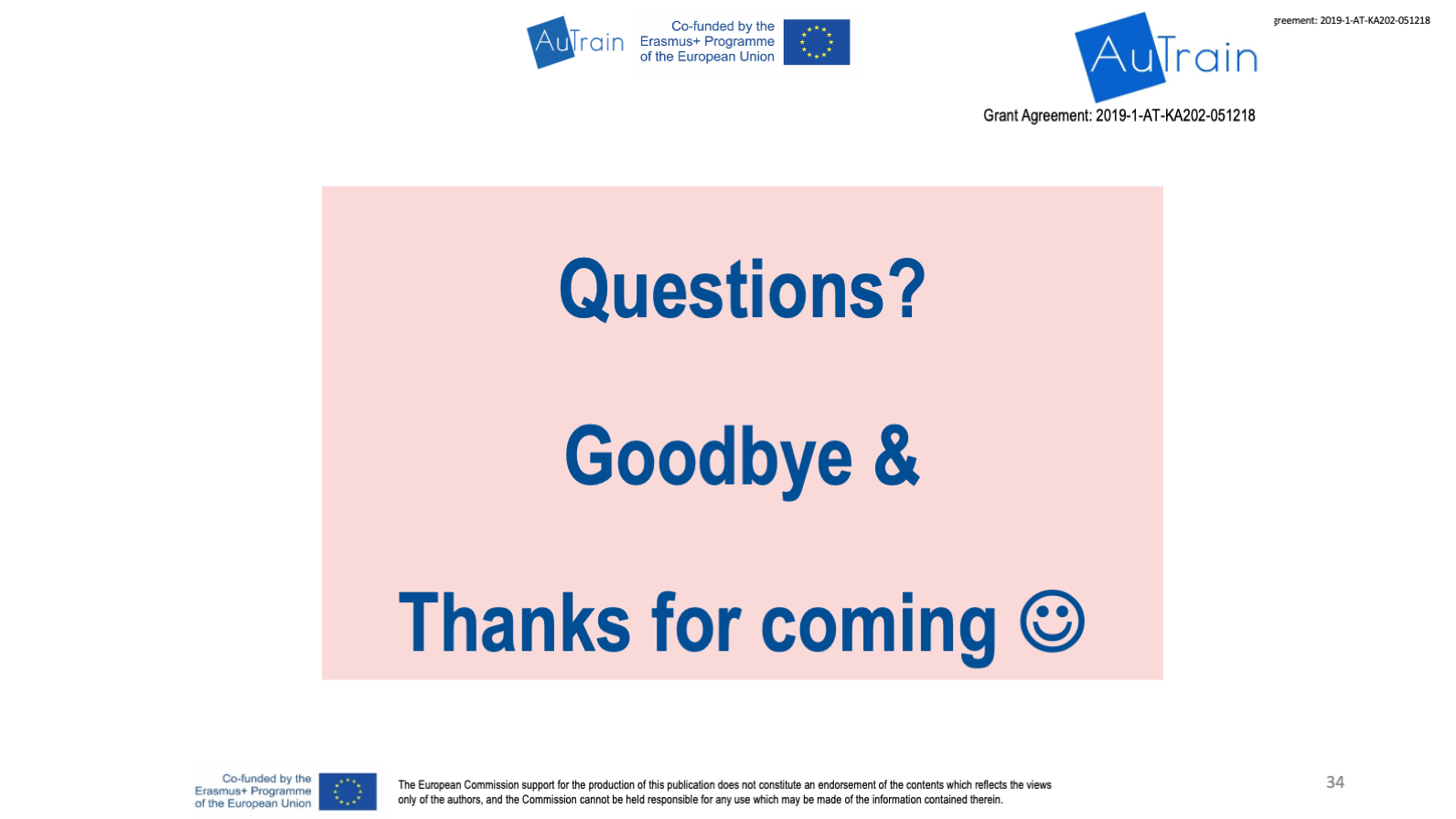
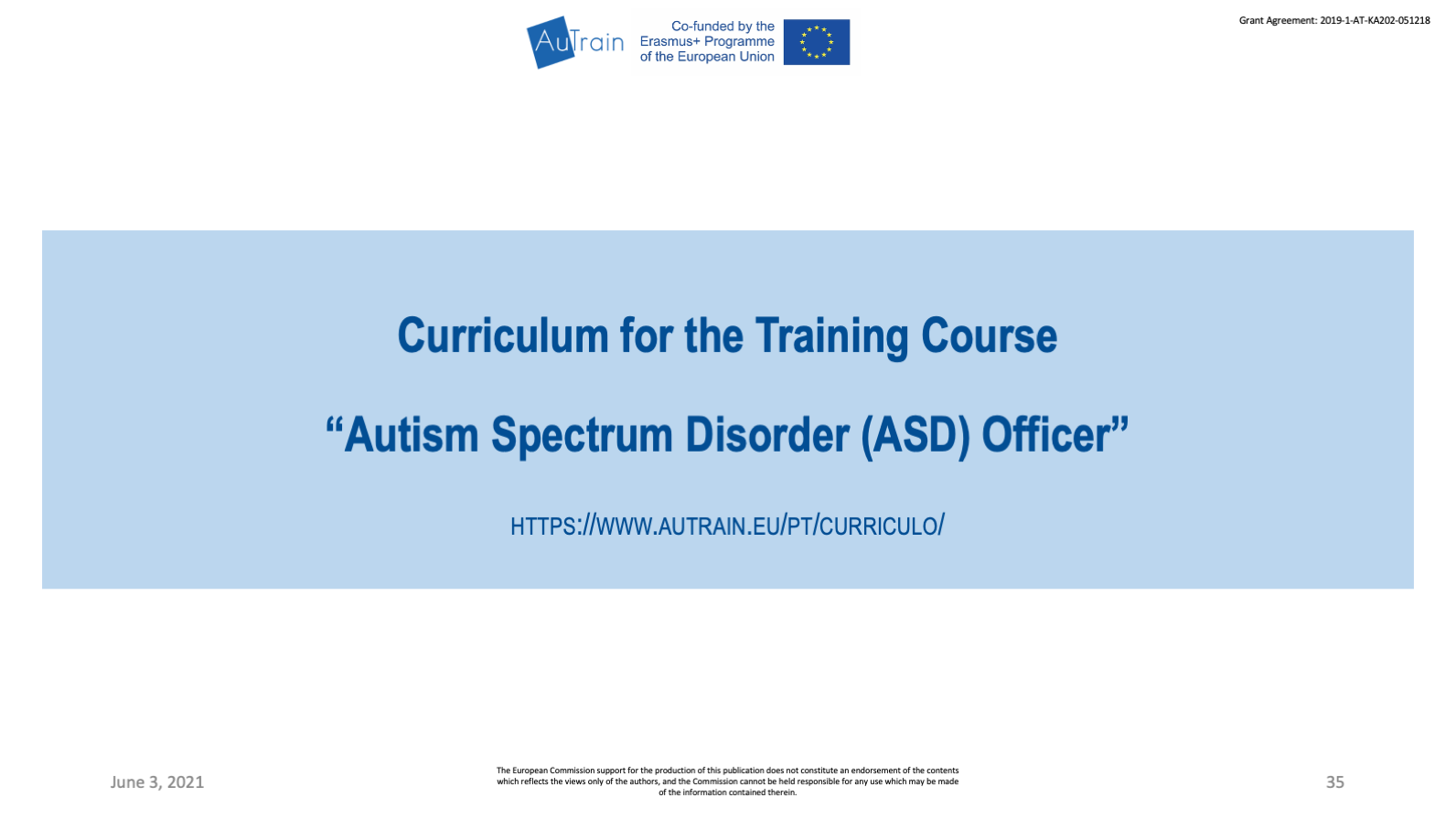
End of the module
Reflection
In the end of the module write a reflection on what occurred during the process. Concerning the participants’ learning, the activities, the organisation, etc.
